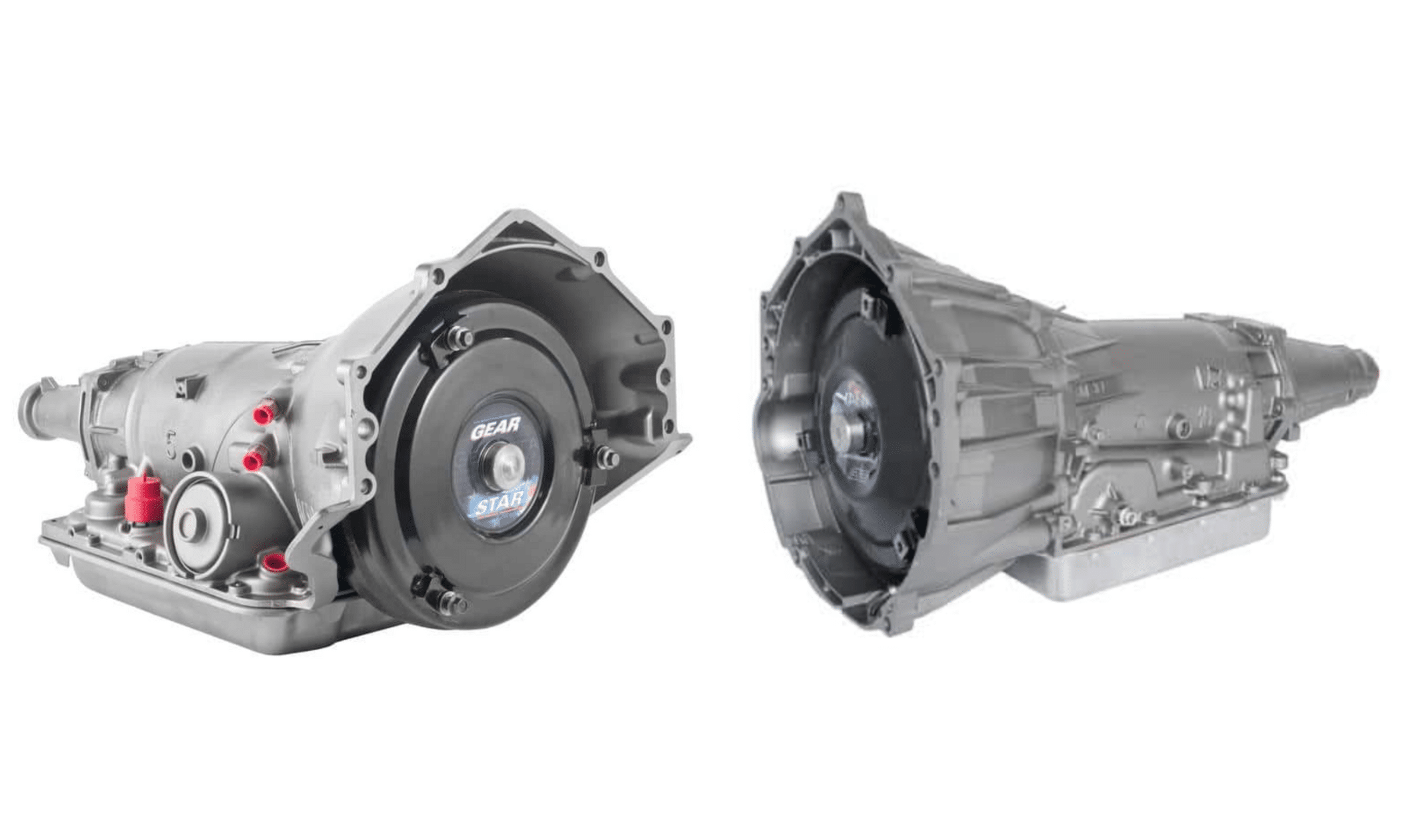The 4L60E and 4L65E have many similarities, to the point that some car enthusiasts skip selling and buying a new transmission, and instead learn to rebuild the 4L60E into a 4L65E. But does that make these transmissions interchangeable? While they share many components, understanding the compatibility and key differences is crucial for anyone considering an upgrade, repair, or rebuild.
Confused about whether the 4L60E and 4L65E transmissions are interchangeable? Swapping or upgrading a transmission can be a costly endeavor. Buying a whole new transmission can seriously hurt the wallet, especially if you’re already over budget on your project car. If you’re trying to make the most of an older GM model, then sometimes it’s just a lot more budget-friendly and economical to upgrade your existing transmission. And in the case of the 4L60E, that effectively means converting it into a 4L65E.
Yes, this does mean that a lot of GM model trucks and cars built with the 4L60E could effectively handle a swapped-in 4L65E, if you’re mindful of the dimensions and the challenges of matching transmissions to your car’s respective computer (through reprogramming or being careful about matching your transmission to the right make and model).
What Are the 4L60E and 4L65E Transmissions?
Overview of the 4L60E Transmission
The 4L60E transmission, introduced in 1993, was a significant upgrade over the 700R4, designed to handle electronic controls and increased power from GM’s modern engines. It’s commonly found in a variety of rear-wheel-drive GM vehicles, such as fourth-generation Camaros, the mid-nineties Yukon, and the Chevrolet Blazer.
The 4L65E: An Enhanced Version
In 2001, GM introduced the 4L65E, a more robust version of the 4L60E, built to withstand more torque and stress. The 4L65E features several internal improvements, such as five-pinion planetaries and hardened shafts, making it better suited for high-performance applications for a variety of heavy-duty vehicles, including the Silverado SS and the Trailblazer SS, as well as the mid-aughts Cadillac Escalade, and the Hummer H2.
Key Differences Between the 4L60E and 4L65E
Internal Components and Durability
The primary difference lies in the internal components. The 4L65E is equipped with upgraded five-pinion planetaries (compared to the 4L60E’s four-pinion version), a stronger input shaft, and improved clutches. These enhancements allow the 4L65E to handle more torque, making it ideal for more powerful engines – but the relatively simple adjustments mean that a 4L60E can be rebuilt to match the specifications of the 4L65E without the cost of a brand-new transmission without the hassle of matching a 4L65E to your current car’s engine and computer.
In total, a rebuild of the 4L60E designed to match the specifications of the 4L65E would entail a new planetary gear set, a stronger input shaft, better clutches and bands, and making appropriate modifications to the separator plate to make the rebuild possible.
Torque Capacity
While the 4L60E is rated to handle around 360 lb-ft of torque, the 4L65E can manage up to 380 lb-ft. This slight improvement makes the 4L65E a more reliable option in heavier-duty applications or modified vehicles, but it boils down to the difference between the planetary carriers.
The 5-pinion planetary carrier is larger and built better, and with the right tools and a little bit of know-how, it can be installed in the 4L60E.
Are 4L60E and 4L65E Interchangeable?
Physically, the 4L60E and 4L65E share the same dimensions, bellhousing pattern, and mounting points, meaning they can technically be swapped without major modifications. However, it’s essential to ensure compatibility with the vehicle’s control systems and engine.
Both are electronically controlled, and matching your transmission to your car’s computer is crucial, not just for proper error coding, but solenoid control.
The solution? Reprogramming, most of the time. While the 4L65E is a direct descendant of the 4L60E, differences in the transmission control modules (TCMs) might necessitate reprogramming or updated controllers, depending on the vehicle’s year and make.
When Should You Upgrade to a 4L65E?
Power Upgrades and Heavy-Duty Use
If you’re running a modified engine or towing heavy loads, upgrading to a 4L65E can provide extra durability and peace of mind. The transmission’s improved internal strength can handle higher torque and extended periods of strain better than the 4L60E.
Aside from towing, another good reason is for project cars with beefier engines and higher horsepower than their original chassis might have supported.
If you’re trying to build a speed demon or just want a car with race proficiency and street reliability, then upgrading your transmission is a must – especially if you’re sporting a 4L60E, which can be known for having a harsh 1-2 shift due to wear-and-tear, as well as original design flaws.
Longevity and Reliability
For daily drivers with no significant performance enhancements, the 4L60E is often sufficient. But sufficient isn’t always what we’re looking for. If you want longevity in a performance vehicle, the 4L65E is worth considering due to its superior durability of the input shaft and gear set.
Even better, consider rebuilding your 4L60E to brand new specifications with custom-machined parts of higher quality than GM’s stock material. Oftentimes, rebuilding an older transmission and upgrading to performance-grade parts can still end up being cheaper than swapping to an entirely different transmission.
Conclusion
While the 4L60E and 4L65E are physically interchangeable in many applications, it’s important to consider the challenges of matching an electronically-controlled transmission to a transmission control module it might not have originally been designed for.
Thankfully, there are plenty of auto shops and transmission rebuilders who can help you reprogram a 4L65E to work with original 4L60E-outfitted GM vehicles. Alternatively, a full transmission rebuild of the internals on your older 4L60E can give you the performance and specifications of a 4L65E, with a few bonuses for performance vehicles or heavy-duty applications outside of simple tow jobs.
